A Wildlife Spotting Guide to the Farne Islands
Attractions | Beach | Coastal Pubs | Country Pubs | Countryside | Family | Outdoor Activities | Pub | Pub Accommodation | Walking | Posted 2024.06.05
The Farne Islands, are a series of islands located off the coast of Northumberland. The islands, managed by the National Trust, host various wildlife species, such as seabirds and grey seals. In this blog we tell you about the wildlife you can see on the island, the best times to visit, and where you can stay nearby. Helping you make the most of your wildlife spotting adventure on the Farne Islands.
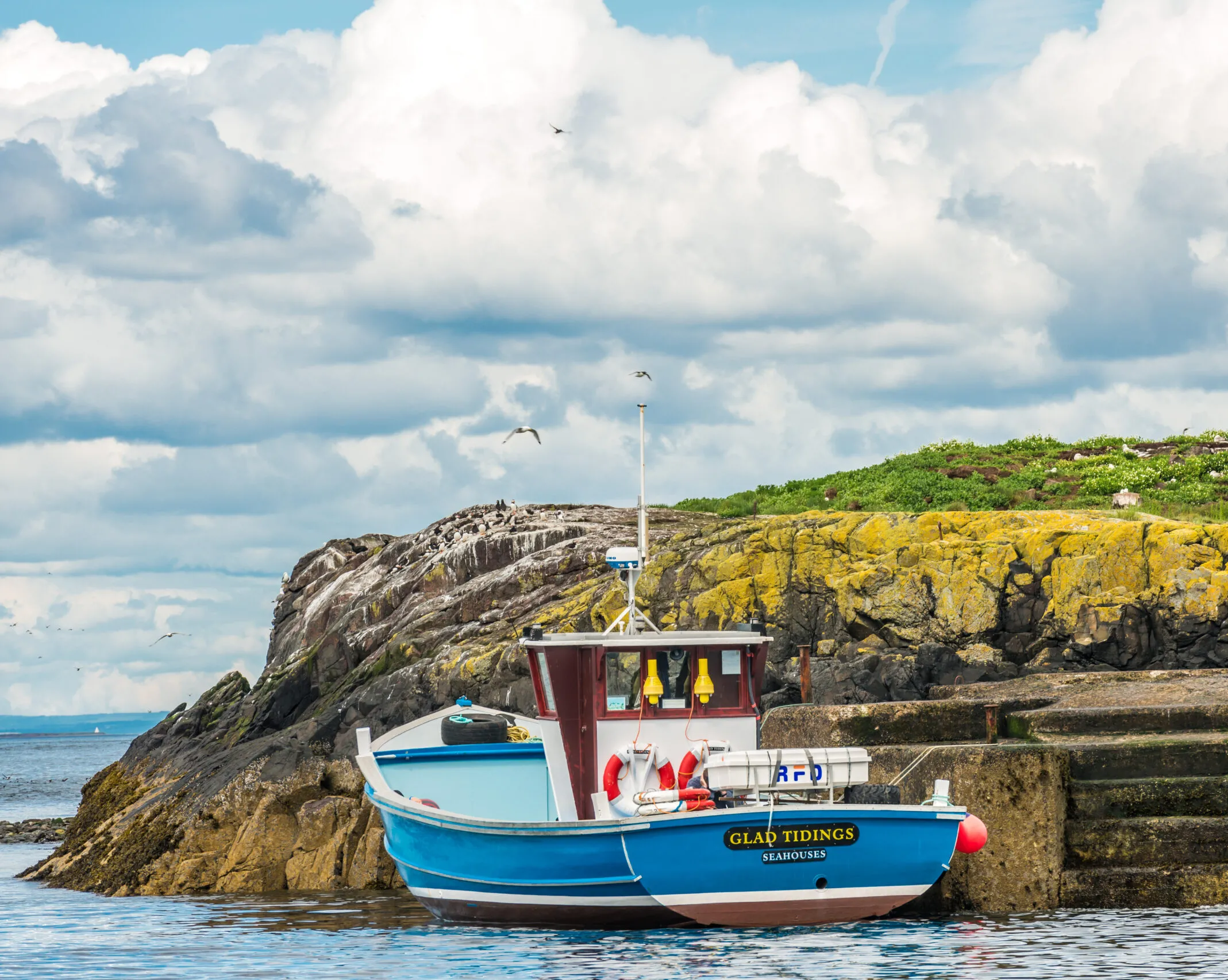
Key Wildlife on the Farne Islands
1. Atlantic Puffins
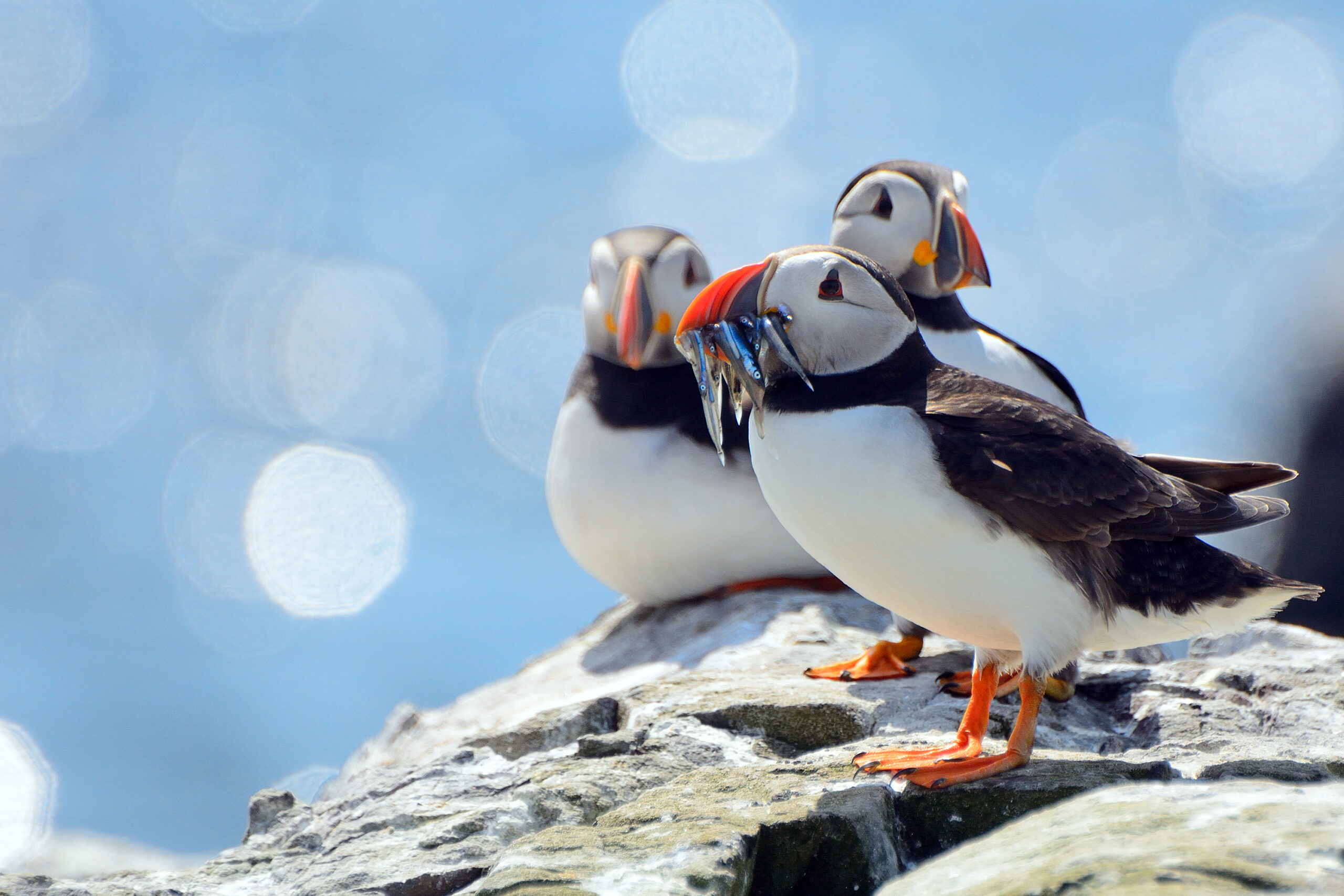
- Season: April to August
- Details: The Farne Islands are home to one of the largest puffin colonies in the UK. Together The Farne Islands host around 43,000 pairs of Atlantic puffins during the breeding season.
- This bird species is known for its distinctive bright, colorful beaks and for using their wings as flippers to swim underwater and catch small fish.
- These seabirds have thrived on the Farnes for decades thanks to good sources of food, a lack of ground predators and the availability of suitable nesting areas.
- With their comical expressions, waddling gait, and vibrant beaks, they captivate the hearts of visitors to the Farne Islands every year.
2. Grey Seals
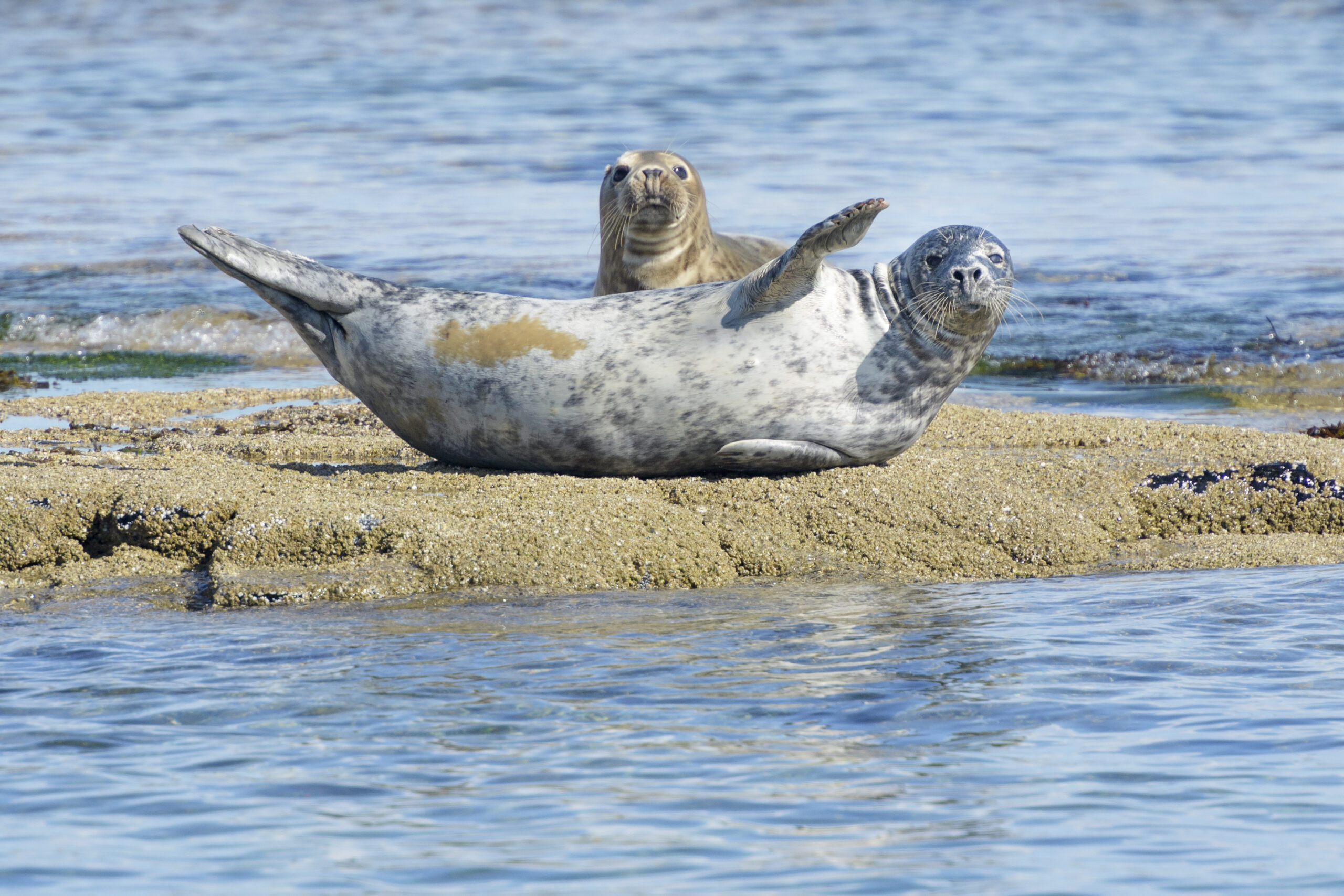
- Season: Year-round, with peak pupping season in autumn
- Details: The Farne Islands are home to one of the UK’s largest grey seal colonies, with over 3,000 pups born each autumn.
- Visitors can observe these seals lounging on rocky shores or swimming and hunting in the surrounding waters.
- Around 2.5 per cent of the pups born annually in Britain are from the Farnes. The Farnes seal colony has increased by 57% over the last 5 years. This is due to the lack of predators and a plentiful supply of sand eels.
3. Seabirds
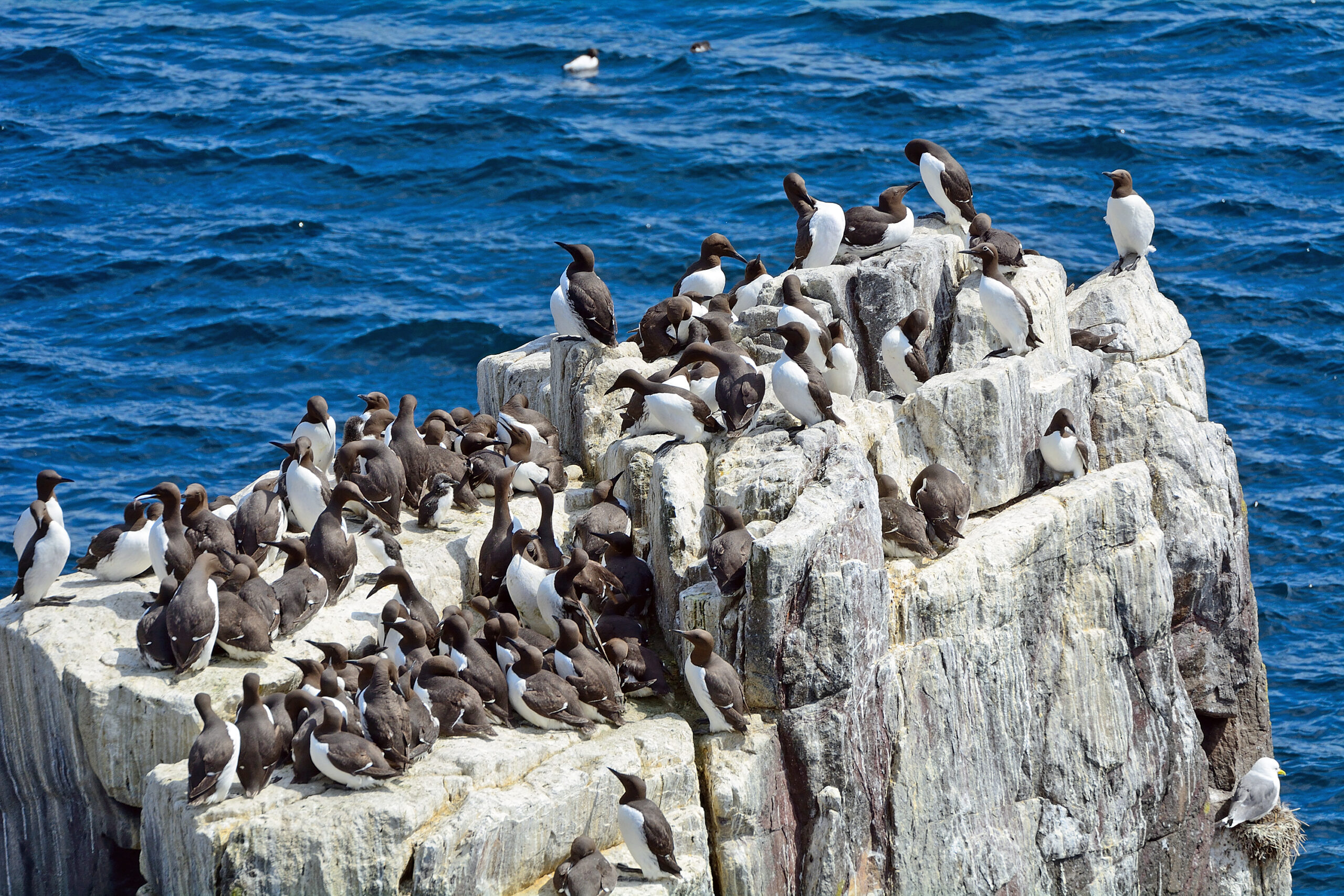
- Season: all year round
- Details: Over 100,000 seabirds and 23 different species of bird can be spotted on The Farne Islands.
- Most varieties of birds start to arrive from the middle of April, although you can see shags on and around the islands all year round.
- Eider ducks, known for their soft down, can be seen nesting in May and June. But beware of the Arctic terns during these months – they are known for dive-bombing visitors to protect their young.
- Between April and August keep a look out for the nesting kittiwakes, a species of gull. As well as Common Guillemots and Razorbills nesting in large colonies on the cliffs.
4. Cetacean Watching
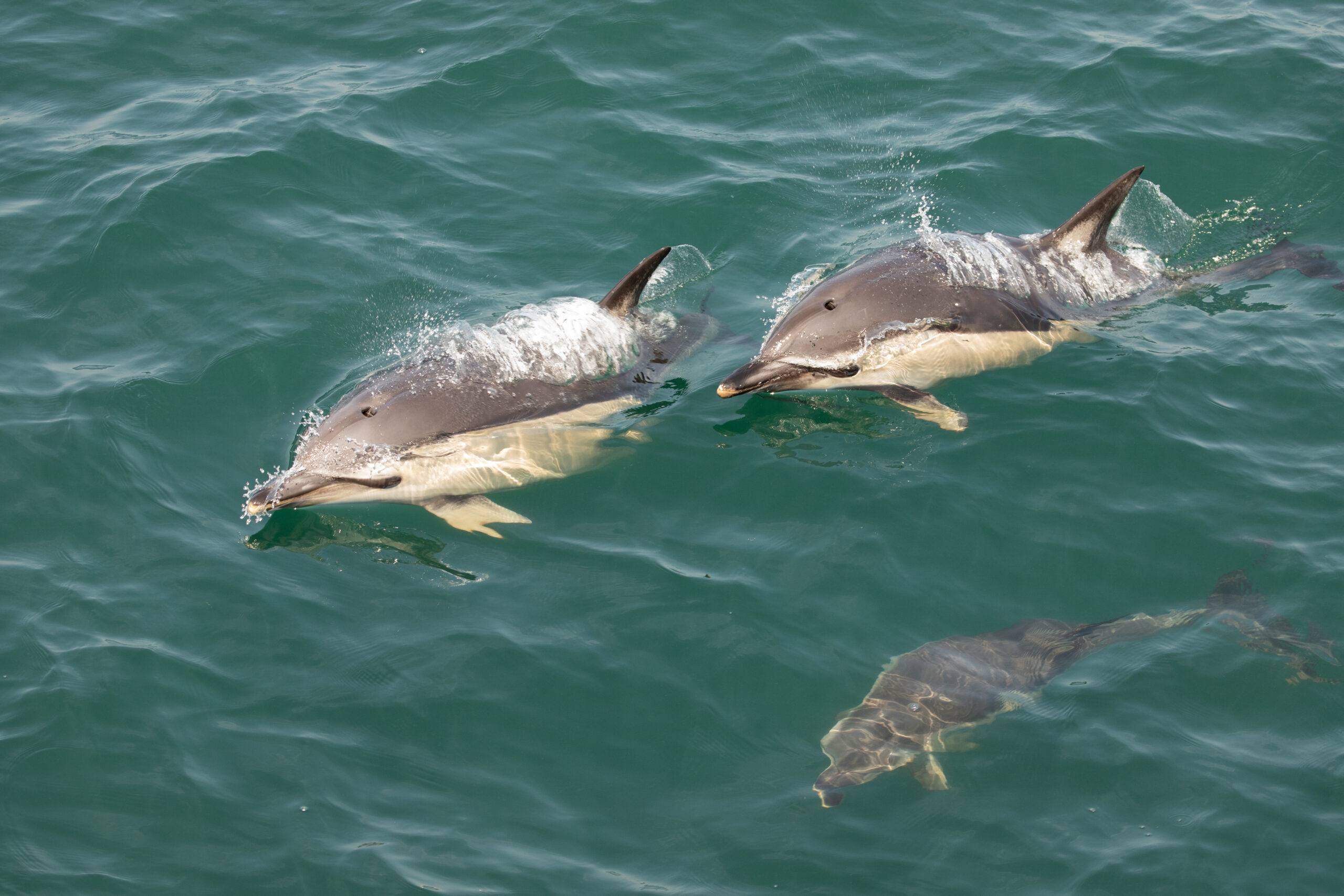
While less predictable, cetaceans such as whales and dolphins can occasionally be seen around the Farne Islands:
- Harbour Porpoises: Harbour porpoises are present in Northumberland’s waters all year. Harbour porpoises are relatively small compared to other dolphins. They have small, rounded heads with no beak and dark lips and chin. Equipped with robust, stocky bodies, they have predominantly dark brown backs with a pale grey or white underside, blending half way up their sides. A small triangular fin set just past the centre of the back is one of its very distinctive features. Arguably they are best viewed from high outcrops like Dunstanburgh Castle, Cullernose Point or Emmanuel Head on Holy Island.
- Dolphins: Bottlenose and white-beaked dolphins are sometimes spotted around the Farne Islands, especially in late summer. Viewing is best on calm days. The white-beaked dolphin is a large, robustly built dolphin with black, white and grey colouration. The Bottlenose dolphin is a chunky and fairly plain grey dolphin. Their beak is short and stubby and their dorsal fin is large, sickle-shaped and often marked with notches and scratches. Bottlenose dolphins are often sighted close to shore alone or in small groups. Look out for boisterous splashing and breaching – and don’t be surprised if they approach your boat to check you out!
- Minke Whales: Minke Whales are best spotted in calm sea conditions. Minke whales are generally spotted alone or in small feeding groups feasting on schools of fish or krill. They are what is known as a “gulp feeder”, meaning they take a huge gulp of fish and push the seawater out through the baleen plates that line their mouths. Look out for the distinctive white “armbands” on the pectoral fins (front flippers).
Boatmen from Seahouses sometimes run special trips if cetaceans are present, providing a thrilling addition to your visit.
Visiting The Farne Islands
- Boat Tours: Multiple operators provide boat tours from Seahouses, offering chances to see wildlife up close. These tours vary, focusing on seabirds, grey seals, or both.
- Serenity Farne Island Boat Tours sail all year round to the Farne Islands and have recently won Gold at The Visit England Awards for Excellence (2024). They offer different trips throughout the year – landings, sunset cruises, photography trips, puffins cruises, Holy Island and ‘grey seal cruises’.
Learn more and book tickets to visit the Farne Islands.
Pubs to stay in when visiting the Farne Islands
The Bamburgh Castle Inn
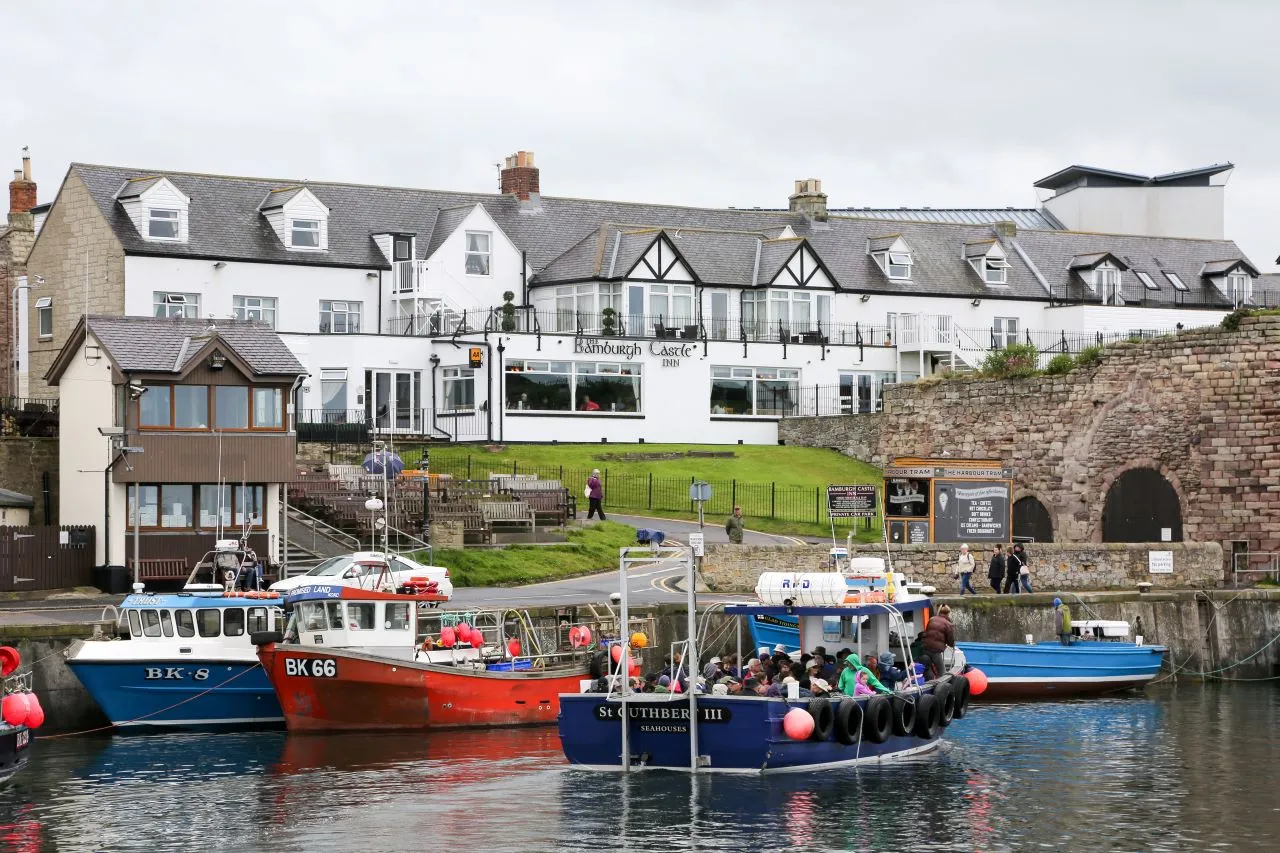
The Bamburgh Castle Inn is a multi-award-winning pub overlooking the harbour in the fishing village of Seahouses. This ideal location means you are only a short walk away from getting a boat to The Farne Island. In the evening, whilst having your dinner, enjoy views of boats coming in and out of the harbour.
Find out more and book The Bamburgh Castle Inn
The Joiner Arms
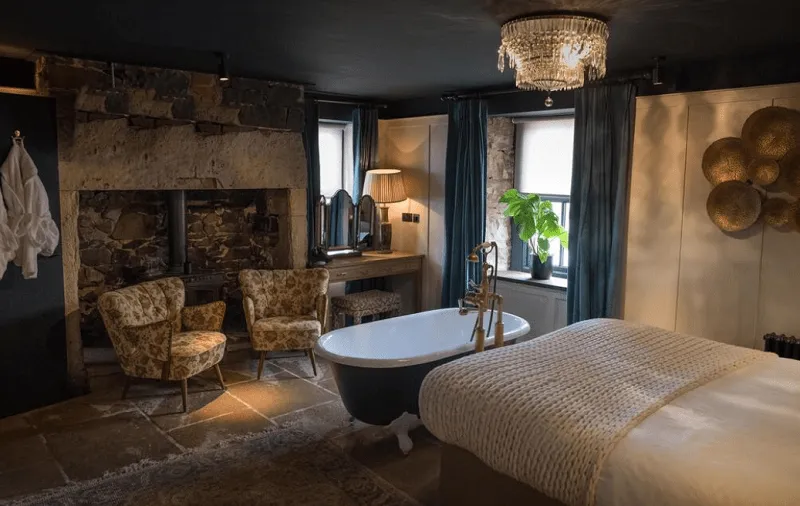
The Joiners Arms is in a beautiful setting in Newton by the Sea, outside of Alnwick and Seahouses. This popular pub serves award-winning dishes prepared with locally sourced and organic products. Each room at The Joiners Arms has boutique-style rooms with lush fabrics and striking colours with some rooms featuring exposed stone walls and original beamed ceilings.
Find out more and book The Joiner Arms
The Percy Arms
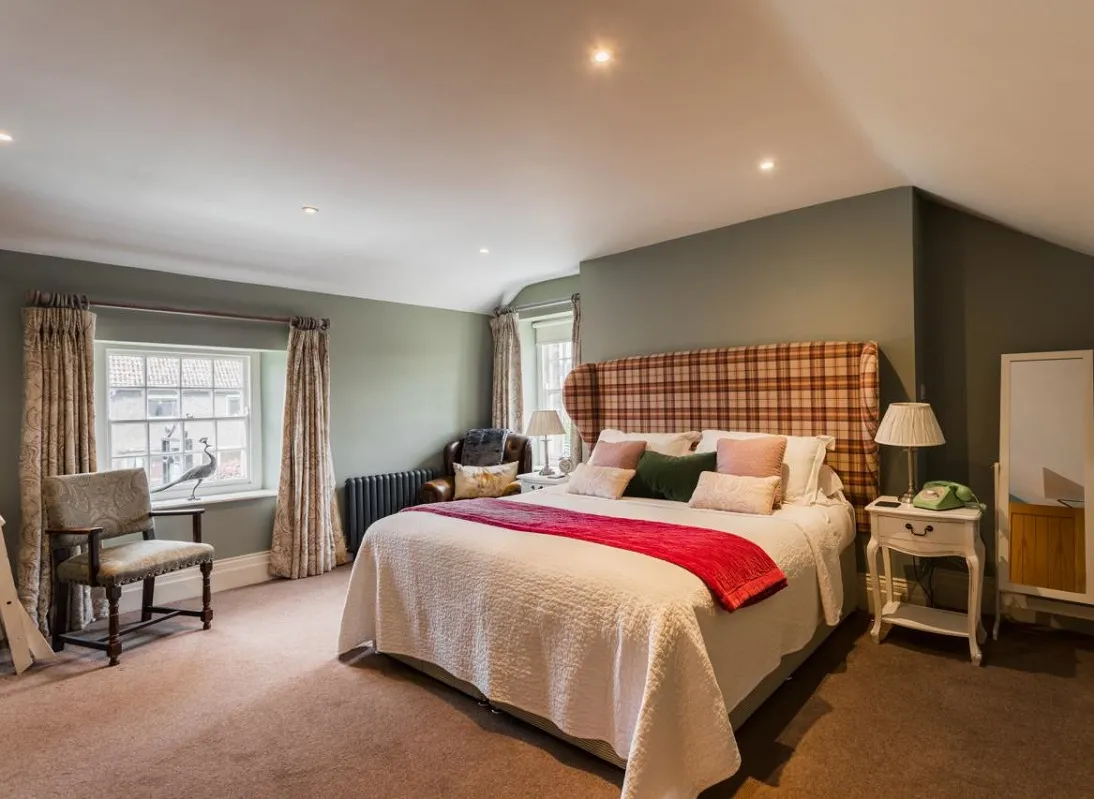
Situated in the village of Chatton, is the Percy Arms, a delightful country pub. At The Percy Arms expect an inviting atmosphere, delicious food and cosy bedrooms. For those who enjoy countryside walks, this pub is nestled among scenic trails in Northumberland.
Find out more and book The Percy Arms
The Lindisfarne Inn
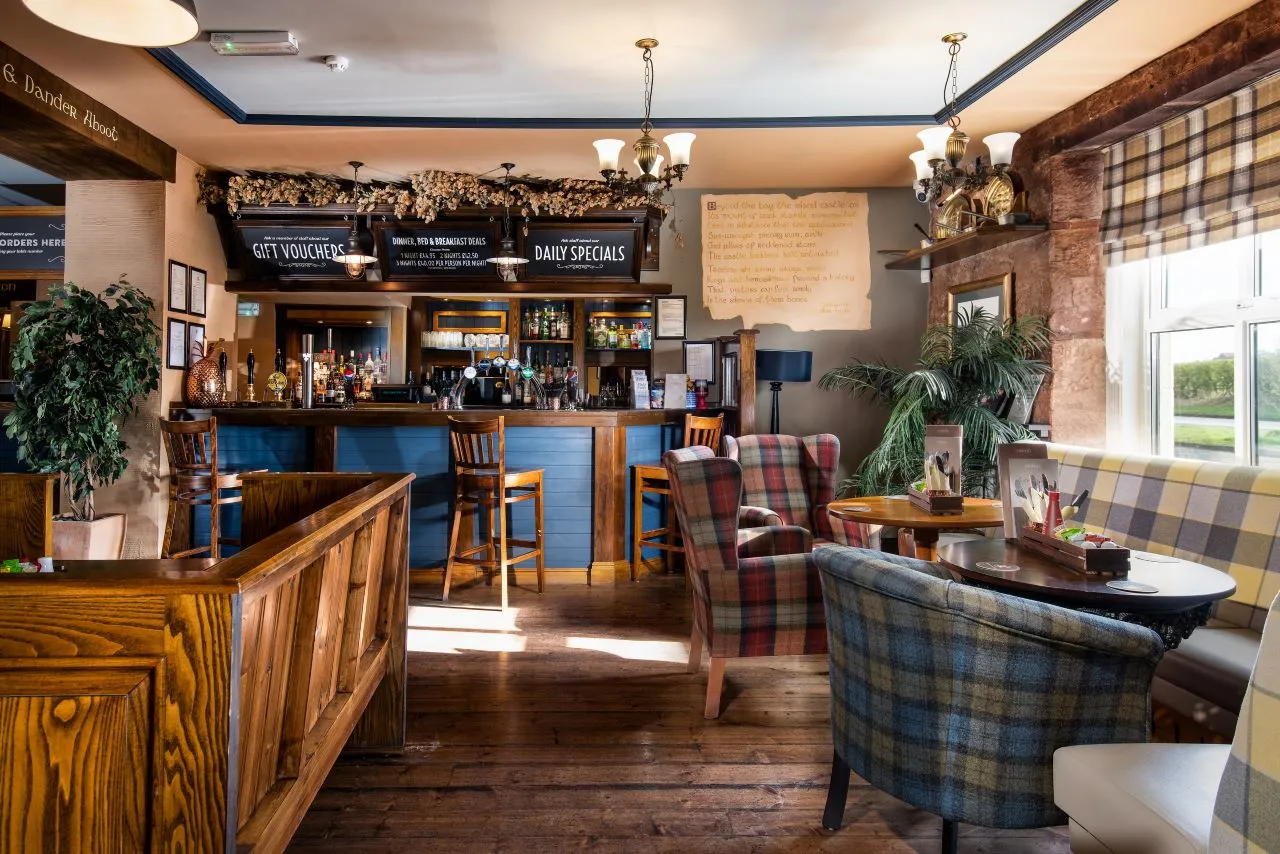
North of The Farne Islands is the Lindisfarne Inn, a characterful pub. Enjoy the pub’s delicious food and drink in the cosy bar area or outside in the beer garden. The pub’s ideal location also means you can explore Lindisfarne National Nature Reserve and play a round of golf at Goswick Golf Club.
